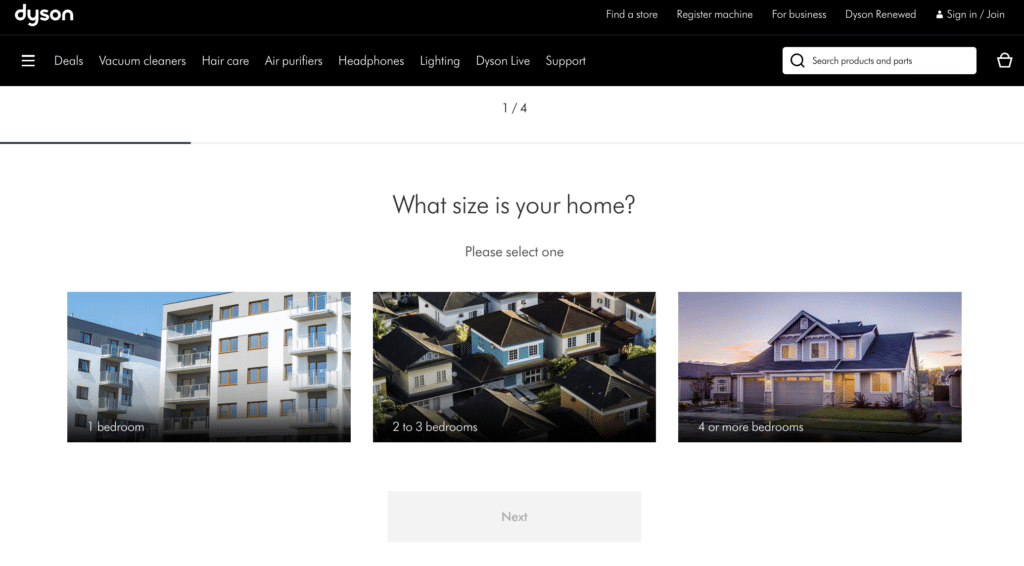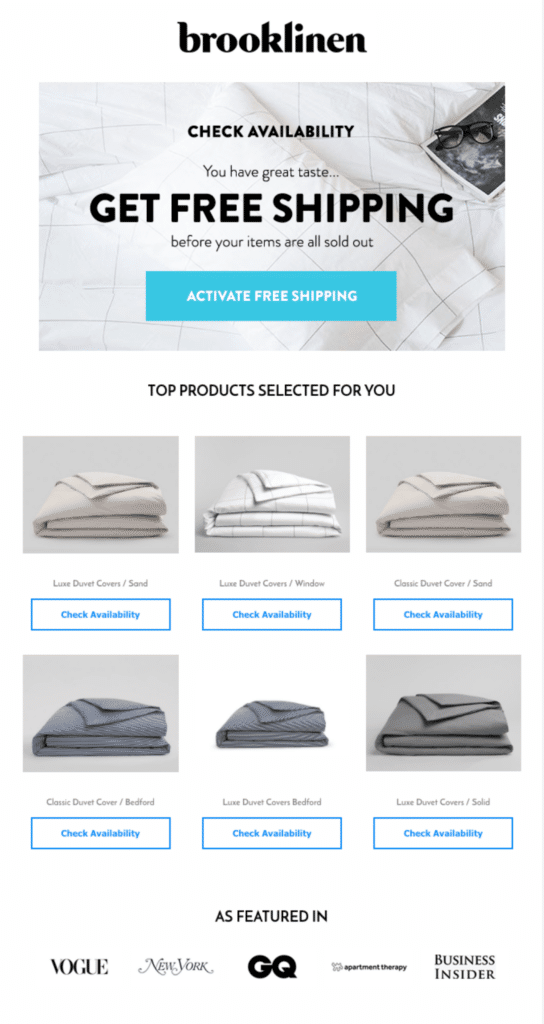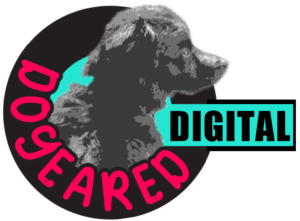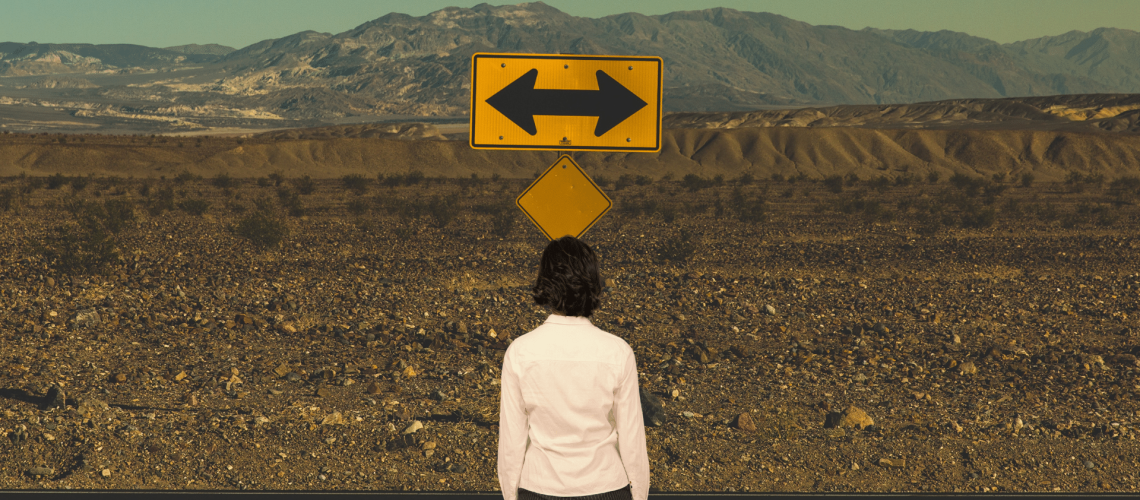Table of Contents:
Think back to the last thing you bought. I’m not talking about an iced coffee or a bottle of nail polish that caught your eye at the drugstore. I’m talking about a bigger ticket item, one that called for research, mulling over, and maybe even an “I’ll sleep on it”.
For me, it was an e-bike. With the uptick in people looking for greener, more affordable modes of transportation, you can bet that there was no shortage of options available. It was up to me (well, to be honest, my partner) to sift through them, comparing features and weighing priorities. And once I’d finally pulled the trigger and gotten my new toy, I started thinking about what exactly went into my decision.
With people today consuming more content than ever before, it’s no surprise that content has cemented a unique role in our psyches. This is especially true when it comes to the psychology behind how we make decisions like, of course, which (and if) e-bike to buy. Too often, brands will jump straight to pushing products and evoking urgency, which can catch people off guard and feed them the wrong content at the wrong time. But, when content is distributed strategically along the decision making process, you can tap into the unique mindset of each stage and become the obvious choice when customers are finally ready to pull the trigger.

Stage 1: Realizing there’s a problem or opportunity
The first stage of the consumer decision-making process is the realization that there’s a problem to be solved or an opportunity to be seized. This realization can manifest in different ways, not just out of conflict. Yes, purchases sometimes stem from the need to overcome a challenge. But other times they come from the identification of potential for growth or improvement.
I didn’t buy an e-bike because I urgently needed a way to get from point A to point B. Instead, it began by seeing people around me enjoying theirs, which brought about the desire to explore my city in a more fun and leisurely way.
In the realization stage, consumers are often driven by a sense of discomfort or a desire for change. They may feel frustrated, anxious, or excited about the prospect of finding a solution to their problem or opening up a new opportunity.
Content strategies
To engage consumers at this stage, your content should focus on highlighting the problem or opportunity and the impact it can have on their lives. Some tactics you can try:
- Use thought-provoking questions in your blog post titles and social posts to encourage introspection and help readers identify with the problem or opportunity
- Tap into the emotions solving the problem will evoke. This could be anything from piece of mind to joy to a sense of fulfillment
- Create educational content that emphasizes the benefits of addressing the issue or seizing the opportunity, such as increased productivity, reduced stress, or improved quality of life
- Share real-life examples that demonstrate the positive outcomes of taking action
One brand that leans into the realization stage is Flash Pack, an adventure travel organizer for people in their 30s and 40s. Through their deep understanding of the motivations and pain points of their target audience, they plant the seeds of wanderlust and stoke the desire for new connections with targeted ads and meme content that boasts the convenience of group travel.
Content distribution tactics
To reach consumers at this stage, focus on distributing your content through channels that align with their discovery process:
- Leverage paid social media advertising to target users based on their interests, behaviors, and demographics that align with the problem or opportunity
- Collaborate with influencers or industry publications to expand your reach and tap into new audiences who may be experiencing the problem or seeking the opportunity
- Optimize your blog posts and videos for relevant search keywords to improve visibility in search engine results pages (SERPs)
By creating and distributing content that resonates with the emotions and motivations specific to this stage, you can capture your audience’s attention and nudge them to start exploring potential solutions. Rather than rubbing salt in the wound of their problem, frame your product or service as an opportunity they’re missing out on.
Stage 2: Passively exploring solutions
Once consumers have identified their need, they begin to explore potential solutions at a high level. At this stage, they’re not yet ready to commit to a specific product or service, but rather are gathering information and evaluating what’s out there.
During this stage, consumers are driven by a desire for knowledge and a need to feel empowered in their decision-making. They want to understand the different solutions available to them and how each one could potentially address their needs.
This is also when people normally start to set their priorities. Do I want a bike that’s ultra-light and easy to transport, or one with a more powerful motor and longer battery life? The exploration stage is when consumers start considering which features they may be able to forego and which are non-negotiable. By answering these questions, they can more easily sift through their options once they get into nitty-gritty research later on.
Content strategies
To get through to consumers in this stage, focus your content on providing educational value and showcasing the benefits of your solution on a grand scale, without pushing too hard:
- Create in-depth blog posts, infographics, or explainer videos that break down the different types of solutions available and explain how each one works
- Develop comprehensive buyer’s guides or comparison articles that highlight the key features and benefits of different solution categories
- Share success stories or testimonials from consumers who have implemented similar solutions and achieved positive results, either through case studies or video interviews. Rather than being too pushy on a specific product, focus on showcasing the difference your solution has made in your customers’ lives.
Course Hero, a software offering study help and exam preparation, has mastered the art of subtle promotion through their huge database of free educational content. Instead of pushing their services, they offer free literature infographics and actionable tips that follow the schedule of the school year. These helpful resources cement the benefits of their offerings to students facing study stress who are starting to consider more efficient and personalized ways to prep for future courses, but don’t come off as a sales pitch.
Content distribution tactics
To get through to consumers in the passive exploration stage, focus your content distribution on the following channels:
- Leverage email marketing to deliver educational content directly to subscribers’ inboxes, segmenting your list based on their interests and previous engagements
- Promote your content through relevant social media groups, forums, or online communities where potential customers are seeking information and advice
- Utilize targeted content syndication or native advertising to reach users on third-party websites or platforms they frequent during their research process
By providing valuable information and insights through strategically distributed content, you can help consumers feel more confident in their ability to make informed decisions and guide them further down the road of their decision making process.
Stage 3: Evaluating the options
Now this is when things start getting serious. By the time consumers have reached this point, they’re envisioning themselves with a solution in place and are ready to put in the time to do some more in-depth research. When I enter the evaluation stage, I’m already picturing myself flitting around the city with the wind in my hair, and I’m ready to narrow down my options and compare specific brands and product lines.
At this stage, consumers are motivated by a desire to find the best possible solution for their needs. They’re looking for reassurance that they’re making the right choice and that the investment they’re about to make will be worth it in the long run. Your content needs to shine a spotlight on what sets you apart and proves to them that you’re the right choice.
Content strategies
At this stage, your content needs to highlight your unique selling points (USPs) and provide social proof to build trust and credibility:
- Create detailed product or service comparison pages on your website that showcase the key features and benefits of your offering and how it stacks up against the competition
- Leverage user-generated content, such as reviews, ratings, and testimonials, to provide authentic insights into the customer experience across your social media channels and website.
- Develop case studies or success stories that showcase how your product or service has helped customers achieve their goals, and promote these through targeted email campaigns or sponsored content
Take, for example, Dyson vacuum cleaners. For those feeling overwhelmed by their options and risking decision fatigue, they offer a quick and convenient quiz that evaluates your needs and suggests the product that will best suit your needs. This use of gamification makes the evaluation stage personal, not to mention super easy.

On the other hand, for the researchers among us, they’ve made it extra easy to compare the features of their products. And we’re not just talking dimensions and price: their table covers pretty much everything that consumers would want to know.

By offering detailed, convenient, and user-friendly resources about their products, Dyson meets people where they are, tailoring their delivery of the information that people need to make an empowered, confident decision.
Content distribution tactics
To reach consumers actively evaluating their options, consider the following distribution strategies:
- Utilize search engine marketing (SEM) to target users searching for specific product or service comparisons, ensuring your content appears prominently in sponsored search results
- Implement retargeting campaigns to deliver personalized content to users who have previously engaged with your website or social media profiles, keeping your brand top-of-mind during their evaluation process
- Partner with industry influencers or thought leaders to create and distribute content that showcases your brand’s expertise and credibility, tapping into their established audience and trust
By creating and distributing content that offers compelling and authentic evidence of your brand’s value and superiority, you can help consumers feel more confident in their decision to choose you over the competition.
Stage 4: Justifying the decision
This is the second guessing stage. Even after they’ve put in the work to find the solution that’s right for them, consumers often experience a moment of hesitation before making a final commitment.
During the justification stage, consumers are often grappling with a mix of emotions, including excitement, anxiety, and uncertainty. They may be questioning whether they truly need the solution they’ve chosen or, more often, whether the investment is justified. To get them off the fence, your content needs to provide the extra push to help them overcome any lingering doubts.
Content strategies
To help them overcome these mental hurdles, your content should focus on creating a sense of urgency and reinforcing the value of your offering:
- Develop targeted email campaigns that address common objections head-on, providing clear, concise answers to the most frequently asked questions
- Create time-sensitive promotional content, such as limited-time offers or exclusive bonuses, to incentivize immediate action and tap into the fear of missing out
- Showcase customer success stories or case studies that demonstrate the tangible results and ROI achieved by using your product or service
My hunt for an e-bike came to a standstill after I found the perfect one. Now that I’ve done my due diligence and perused my options, I start to second guess myself. Do I really need this alternative mode of transportation? Will I actually use it? Is it worth the investment?
The nudge that pushed me to purchase was a targeted ad about a limited time sale on the very bike I’d been eyeing. Not only did the lower price help me justify the financial investment, but the re-exposure to the bike of my dreams conjured up the image of myself pedaling to brunch that I’d been forming since the realization stage. And with the urgency of the limited time offer, I knew that the best time to act was now.
Content distribution tactics
To effectively reach consumers who may be wavering, hone in on your distribution strategy with these tactics:
- Utilize direct mail or personalized email campaigns to deliver targeted content that addresses the specific concerns or hesitations of individual consumers
- Leverage retargeting to promote customer testimonials, success stories, or limited-time offers to users who have previously engaged with your brand
- Implement exit-intent popups on your website to capture users who may be hesitating to make a purchase, offering them exclusive content or promotions to encourage conversion
By creating and distributing content that anticipates and proactively addresses customer concerns and hesitations, you can help them feel more confident and motivated to take the final step towards conversion.
Stage 5: Committing to the purchase
At last, you’re almost at the finish line! The final stage of the consumer decision-making process is, of course, the commitment to take action and follow through with the purchase.
At this point, consumers are driven by a sense of excitement and anticipation, but they may also experience a degree of nervousness or apprehension about the purchase process itself. So your content needs to provide a seamless experience that eliminates any remaining roadblocks to conversion.
Content strategies
To tap into the positive emotions and mitigate any potential concerns, your content should focus on providing a clear, reassuring path to purchase:
- Create detailed, step-by-step video tutorials or FAQs that walk customers through the purchase process and highlight the key benefits they can expect to receive
- Develop personalized content recommendations based on the customer’s previous interactions with your brand, demonstrating your commitment to their success
- Design a streamlined, user-friendly checkout process that minimizes form fields, offers multiple payment options, and provides clear, concise instructions at each step
- Ensure that checkout screens have clear and prominent directions to get through to customer service representatives in case of a question or technical issue
Did you know that over 70% of shopping carts end up abandoned? The most cited reason for why e-shoppers left their carts behind is the extra costs associated with shipping, taxes, and fees. Brooklinen combats cart abandonment by offering free shipping to customers who stopped before submitting their order. This kind of offer can be the final push customers need to make it over the very last speed bump, especially when you add in a ticking clock.

Content distribution tactics
To take the final step to turn browsers into converters, consider the following distribution strategies:
- Implement retargeting campaigns that deliver personalized content and offers to users who have shown a high level of purchase intent
- Utilize email marketing to send targeted, timely content to users who have completed specific actions, such as making a purchase or abandoning their cart, to encourage follow-through or re-engagement
- Leverage chatbots or live chat support on your website to provide real-time assistance and guidance to users who may have questions or concerns during the purchase process
By creating and distributing content that anticipates and addresses the needs and concerns of consumers at this critical turning point, you can help them feel more empowered and motivated to complete the purchase and become loyal customers of your brand.
The messy humanity of decision making
While decision making is often viewed as a linear progression from awareness to purchase, research has shown that this is rarely the case. In reality, consumers often move back and forth between stages, revisiting previous steps or even starting with options before going back to the problem. This convoluted journey is driven by a variety of factors, including changing needs, new information, or unexpected obstacles. Someone might make it all the way to the justification phase, ready to make a purchase, but then discover a new piece of information that causes them to drop back to the solutions phase to re-evaluate their options. That’s why it’s so critical to provide your prospects with a steady stream of valuable, engaging, and consistent information to help them move through their unique buying journey.
On top of this, it’s important to remember that, at the end of the day, you’re appealing to people, not robots. Emotions play a powerful role in shaping perceptions, motivations, and behaviors. In fact, emotions are often the primary driver of consumer decision-making, even when we believe we’re making purely rational choices.
As you develop your content strategy, focus on creating content that resonates with the unique needs, motivations, and concerns of your audience at each stage of their journey. By tapping into the unique psychologies of each phase, you can surpass the competition and cement long-term customer loyalty. Through continuous testing and refinement, you’ll develop a cyclical strategy that turns passive browsers into brand advocates with testimonials of their own.


